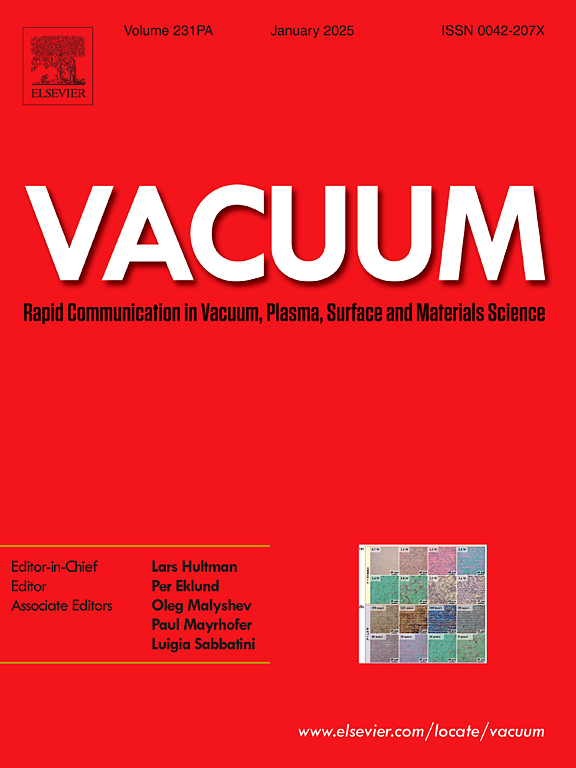Synthesis and characterization of Cu2O/ZnO heterojunction for photocatalytic removal of methylene blue
IF 3.8
2区 材料科学
Q2 MATERIALS SCIENCE, MULTIDISCIPLINARY
引用次数: 0
Abstract
In this work, a Cu2O/ZnO heterojunction photocatalyst was synthesized via an in-situ precipitation method and characterized to assess its potential for photocatalytic dye degradation under visible light irradiation. Structural analysis using X-ray diffraction (XRD) confirmed the crystalline phases of Cu2O and ZnO, while Fourier-transform infrared spectroscopy (FTIR) and X-ray photoelectron spectroscopy (XPS) verified the presence of functional groups and elemental states, respectively. Morphological investigations using FESEM and TEM revealed the uniform anchoring of ZnO nanoparticles on Cu2O microcubes, facilitating effective heterojunction formation. UV–visible diffuse reflectance spectroscopy (UV-DRS) indicated that the Cu2O/ZnO composite exhibited a narrowed band gap, enabling superior visible-light absorption compared to its pristine counterparts. Photocatalytic tests demonstrated a degradation efficiency of 73.3 % for MB within 60 min of visible-light, significantly outperforming individual Cu2O and ZnO. The study provides valuable insights into the interfacial charge dynamics and highlights a promising strategy for improving photocatalytic efficiency via heterostructure.
光催化去除亚甲基蓝用Cu2O/ZnO异质结的合成与表征
本文采用原位沉淀法合成了一种Cu2O/ZnO异质结光催化剂,并对其进行了表征,以评估其在可见光下光催化降解染料的潜力。x射线衍射(XRD)分析证实了Cu2O和ZnO的结晶相,傅里叶变换红外光谱(FTIR)和x射线光电子能谱(XPS)分别证实了官能团和元素态的存在。利用FESEM和TEM进行的形态学研究表明,ZnO纳米颗粒在Cu2O微立方上均匀锚定,促进了有效的异质结形成。紫外-可见漫反射光谱(UV-DRS)表明,与原始材料相比,Cu2O/ZnO复合材料具有更窄的带隙,能够更好地吸收可见光。光催化测试表明,在可见光下60分钟内,MB的降解效率为73.3%,显著优于单独的Cu2O和ZnO。该研究为界面电荷动力学提供了有价值的见解,并强调了通过异质结构提高光催化效率的有前途的策略。
本文章由计算机程序翻译,如有差异,请以英文原文为准。
求助全文
约1分钟内获得全文
求助全文
来源期刊

Vacuum
工程技术-材料科学:综合
CiteScore
6.80
自引率
17.50%
发文量
0
审稿时长
34 days
期刊介绍:
Vacuum is an international rapid publications journal with a focus on short communication. All papers are peer-reviewed, with the review process for short communication geared towards very fast turnaround times. The journal also published full research papers, thematic issues and selected papers from leading conferences.
A report in Vacuum should represent a major advance in an area that involves a controlled environment at pressures of one atmosphere or below.
The scope of the journal includes:
1. Vacuum; original developments in vacuum pumping and instrumentation, vacuum measurement, vacuum gas dynamics, gas-surface interactions, surface treatment for UHV applications and low outgassing, vacuum melting, sintering, and vacuum metrology. Technology and solutions for large-scale facilities (e.g., particle accelerators and fusion devices). New instrumentation ( e.g., detectors and electron microscopes).
2. Plasma science; advances in PVD, CVD, plasma-assisted CVD, ion sources, deposition processes and analysis.
3. Surface science; surface engineering, surface chemistry, surface analysis, crystal growth, ion-surface interactions and etching, nanometer-scale processing, surface modification.
4. Materials science; novel functional or structural materials. Metals, ceramics, and polymers. Experiments, simulations, and modelling for understanding structure-property relationships. Thin films and coatings. Nanostructures and ion implantation.
 求助内容:
求助内容: 应助结果提醒方式:
应助结果提醒方式:


